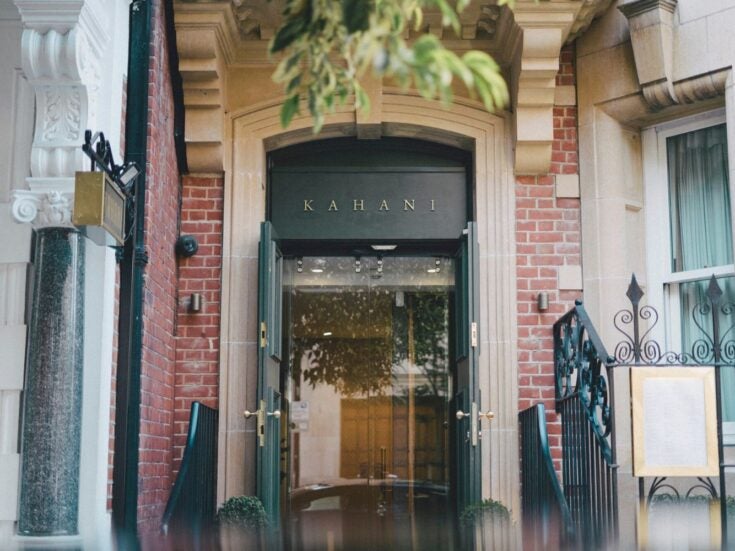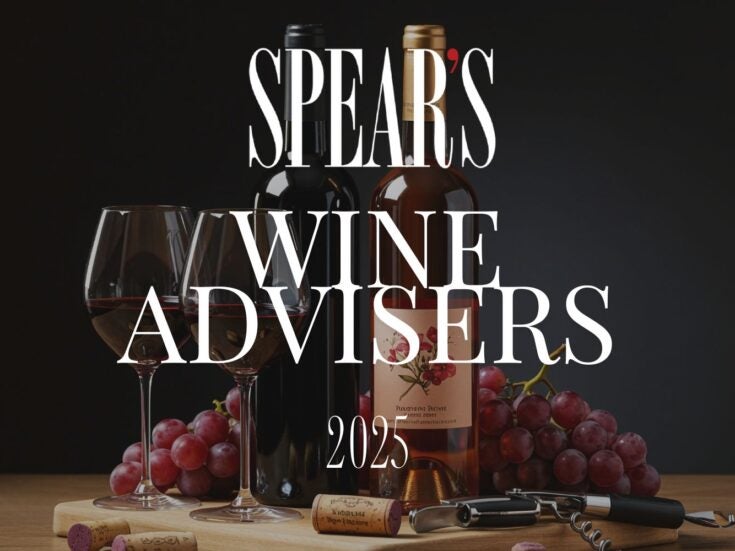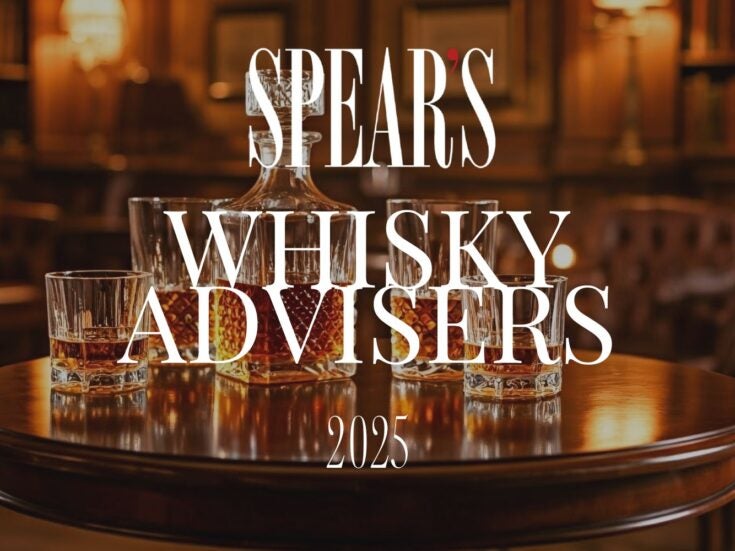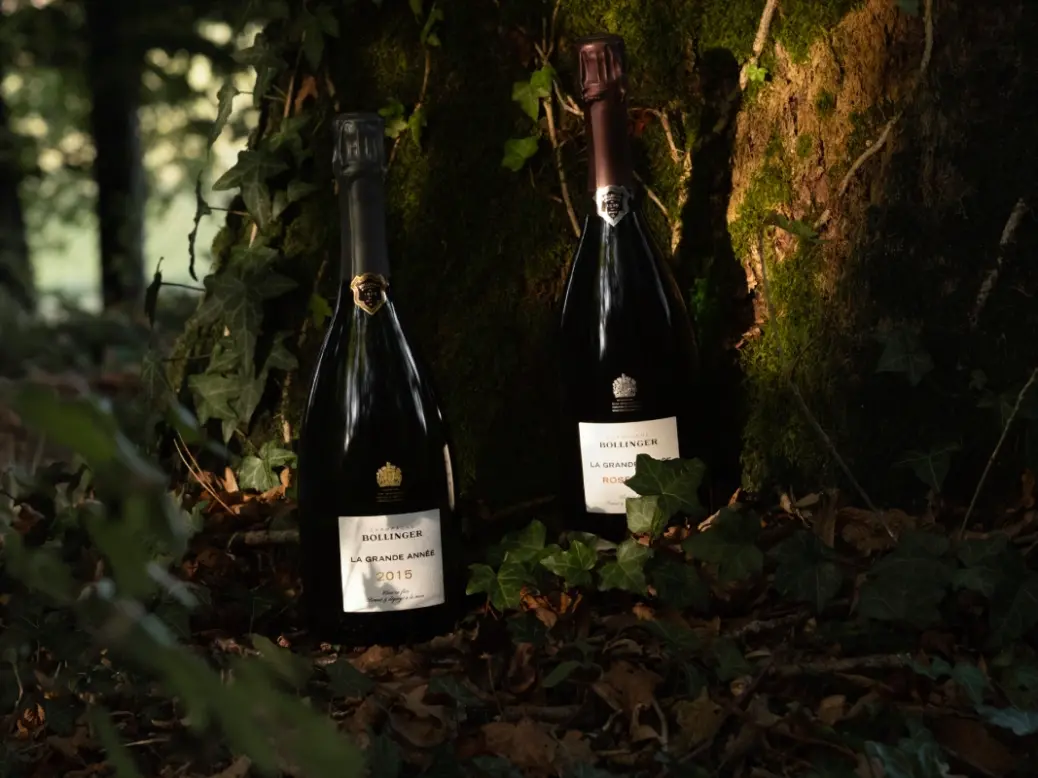
Paris in spring is always a delight but this year the city of light is even more special, basking in the spotlight of the forthcoming Paris 2024 Olympic and Paralympic Games with what promises to be a spectacular opening ceremony and a month-long showcase of elegance against a beautiful background.
In such a celebratory and historic year, only champagne will do. And it is fitting that esteemed champagne house Bollinger unveiled its two new Grand Année releases – a wine that is only made in the best years – in a 600-year-old listed mansion alongside Paris’s oldest street, a stone’s throw from Notre-Dame, still swaddled in scaffolding, but rising from the ashes.
Throughout its centuries-old history, the magnificent Philanthro-Lab has been home to the capital’s first faculty of surgery, a carpenter’s, and a butcher’s, but is now dedicated to furthering France’s philanthropic community. The venue, as befits a former carpentry, is a homage to wood and was chosen by Bollinger to reflect the Maison’s commitment to oak cask ageing and the subsequent flavour profiles that define the House.
[See also: Inside the Port Ellen ‘ghost distillery’ as it reopens after 40 years]
Just as the skilled craftspeople at nearby Notre-Dame are meeting the challenges of rebuilding the magnificent cathedral by combining ancient art forms with modern approaches, Champagne Bollinger are being confronted with an ever changing environment which, if these two new releases are to go by, are pushing them to excel further than ever.
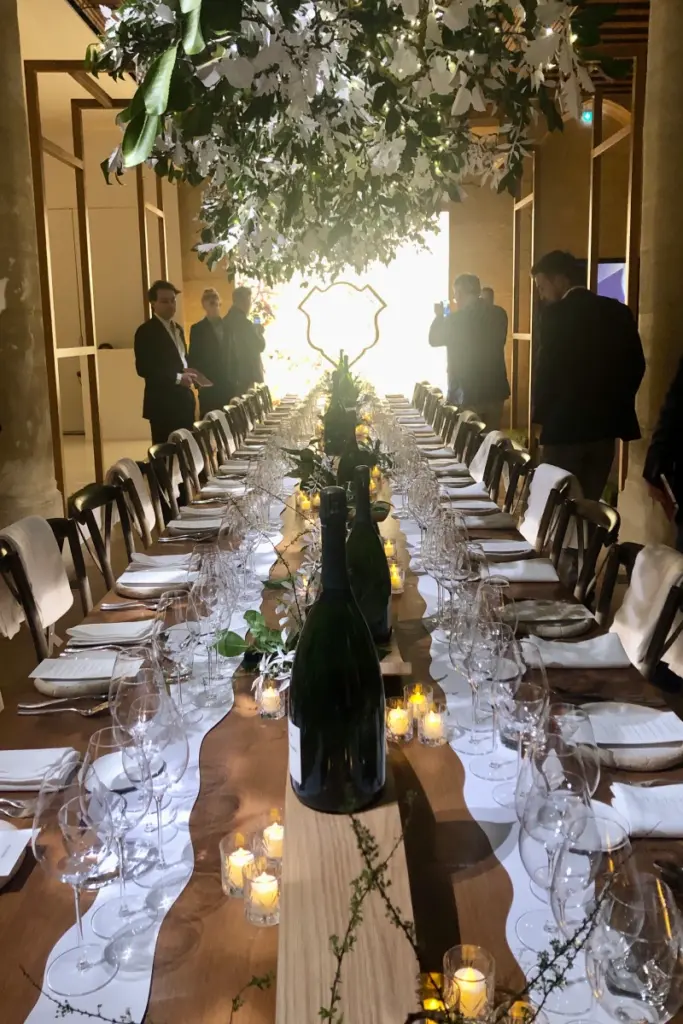
It is ‘no scoop’ that 2015 was a ‘challenging’ year for champagne maisons, says Cyril Delarue, sixth-generation Bollinger family member, as he unveiled the releases under the domed magnificence of the Philanthro-Lab’s entrance hall.
Managing director, Charles-Armand de Belenet says 2015 was the year climate change ‘accelerated’ and it was clear the hot dry summer that pushed the region to the point of drought and resulted in an early harvest was no one-off.
‘After a mild winter and a super dry year there was only sufficient water thanks to the chalky subsoils in the grand and premier cru sites used’, de Belenet said.
A year zero for champagne houses, Champagne Bollinger has met these challenges with enthusiasm and from 2015 have begun shoring up its future with a move to sustainability.
[See also: Spear’s 500 Wine Advisers]
‘This is about opulence’
The warm vintage of 2015 has resulted in a champagne made to be enjoyed immediately – this is not a wine that wants to be kept waiting (although it promises fine ageing potential). It is also a fabulous gastronomic wine, its nuances drawn out by wild game, foie gras and red berries.
The sunshine of 2015 brought opulence to the Pinot Noir in La Grande Année that had to be calmed by more Chardonnay – 40% Chardonnay, is the highest amount ever used in La Grande Année blend – to preserve the balance and freshness in the wine.
The vintage, one of the gathered experts remarks, would be easy to underestimate. It is lean and focused, but soon opens up and comes alive with its chocolate, citrus fruits notes and lingering salinity.
Speaking at the first pouring, De Belenet described La Grande Année 2015 as ‘almost the opposite of the 2014’.
‘This is about opulence, and we had to counter that opulence from our Aÿ vineyards with more Chardonnay in the blend,’ he said. ‘Verzenay brings the salty, iodine note on the finish.’
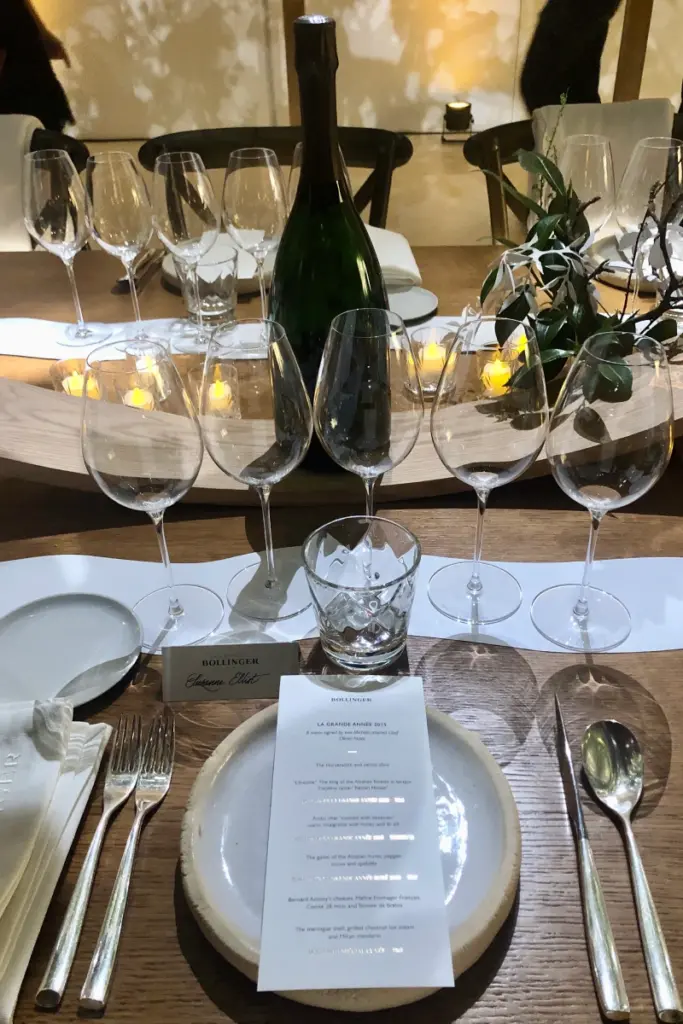
Grand cue meets the grand canopy
While Bollinger’s history has always been interwoven with the family forest in Cuis, which stands above the Maison’s 180 hectares of vineyards, since 2015 it has taken on greater significance as the House moves towards a sustainable future.
Bollinger ferments its wines in oak barrels, a practice that brings unrivalled complexity and character to its champagnes. Since 2015, the barrels have been made by wood from the Cuis forest that will store future vintages.
Bollinger is the only remaining champagne house to have its own cooper. Gaël Chaunut is here tonight from his workshop in Aÿ which has been recreated, to demonstrate the skill and craft that goes into repairing and making each barrel – a process which takes about 12 hours. A centuries-old skill, he uses tools that are 200 years old, the only tweak in hundreds of years is that buckwheat is now used instead of wheat flour to ensure the vintage is suitable for people with a gluten intolerance or allergy.
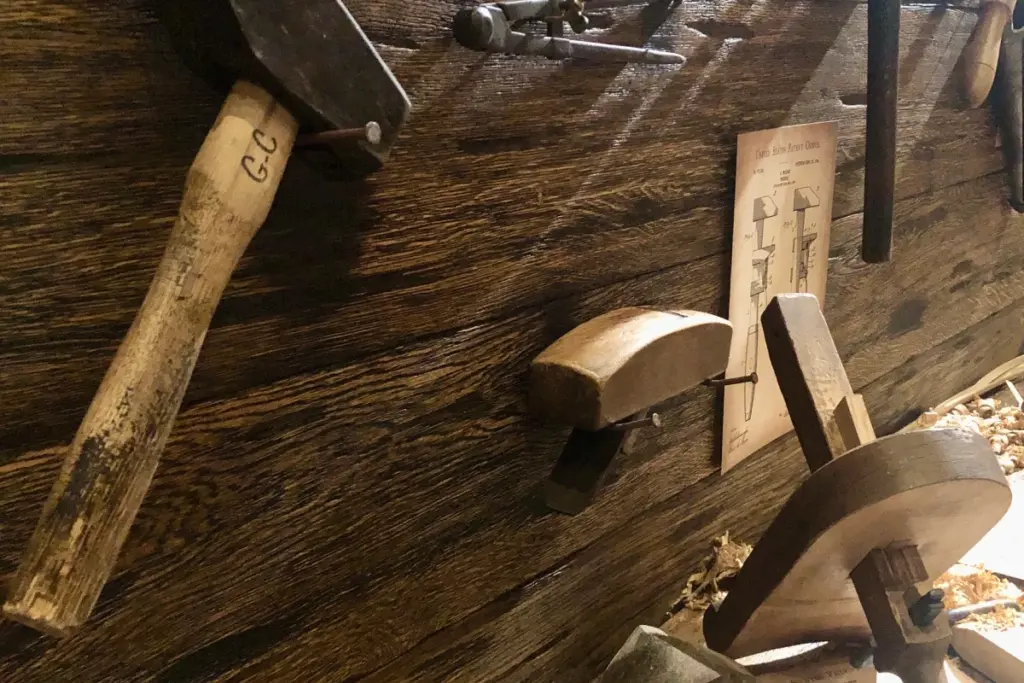
Fine dining in the forest
Champagne is a drink synonymous with celebration, but the creamy richness, the weight and Pinot Noir profile of the 2015 vintages lend themselves perfectly to food pairings and can easily be taken beyond the aperitif.
To demonstrate the flexibility of the vintages, two-star Michelin star chef Olivier Nasti, a native of Alsace, created a tasting menu designed to balance and enhance the La Grande Année Rosé and La Grande Année 2015 and the distinct dishes they are served with.
The wood thread carries through to the banquet hall. Guests sit under an artwork made of 9,500 pieces of paper designed to resemble a forest; the menu too reflected the ‘wood’ theme with Nasti weaving in mushrooms, games and nuts into the dishes.
The opening dish, venison tartare with Osciètre caviar and a citrus ice with petals was served with La Grande Année from a bottle. To follow, the Arctic char cooked in beeswax was paired with wine served in a magnum, its freshness clearly showing the ageing potential of the wine.
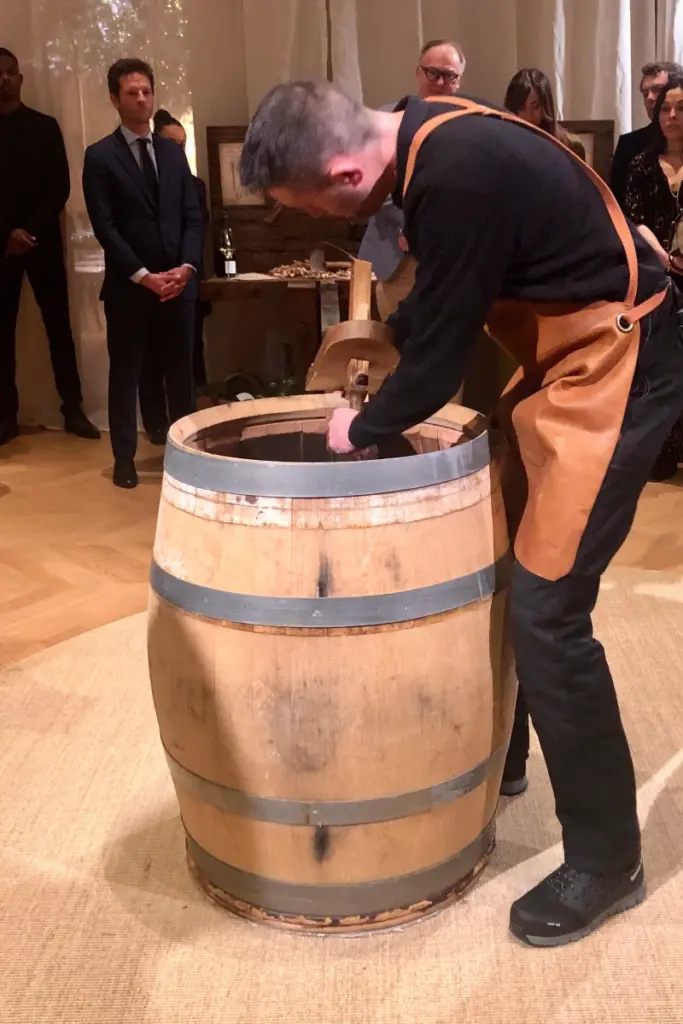
La Grande Année Rosé 2015, a beautiful deep, pinkish-red, is paired with sous vide loin of young deer, served with purees – pine tree, mushroom, red fruits, white cheese and hazelnut, that bring the taste of Nasti’s Alastian forest to this table in Paris. It is served alongside spatzlés in a bowl of fermented milk that marries perfectly to the flavours in the rosé.
A mystery wine produced with 28-month Comté and Tomme de Brebis – from affineur Bernard Antony – turned out to be La Grande Année 1989, chosen by the team as a suggestion of where the 2015 may be heading over time.
La Grande Année and La Grande Année Rosé showcase the characteristics of what Bollinger’s wine director, Denis Bunner, describes, as ‘an exceptional year’, and can be enjoyed in what promises for Paris, and France, to be another such year, while its richness and structure promises fine ageing potential.
Priced at £175 for La Grande Année 2015 and £225 for La Grande Année Rosé 2015, the wines are available from: Berry Bros & Rudd; Amathus; Lea & Sandeman; Brunswick Fine Wines; Nickolls & Perks; Davis Bell & McCraith and BI.

